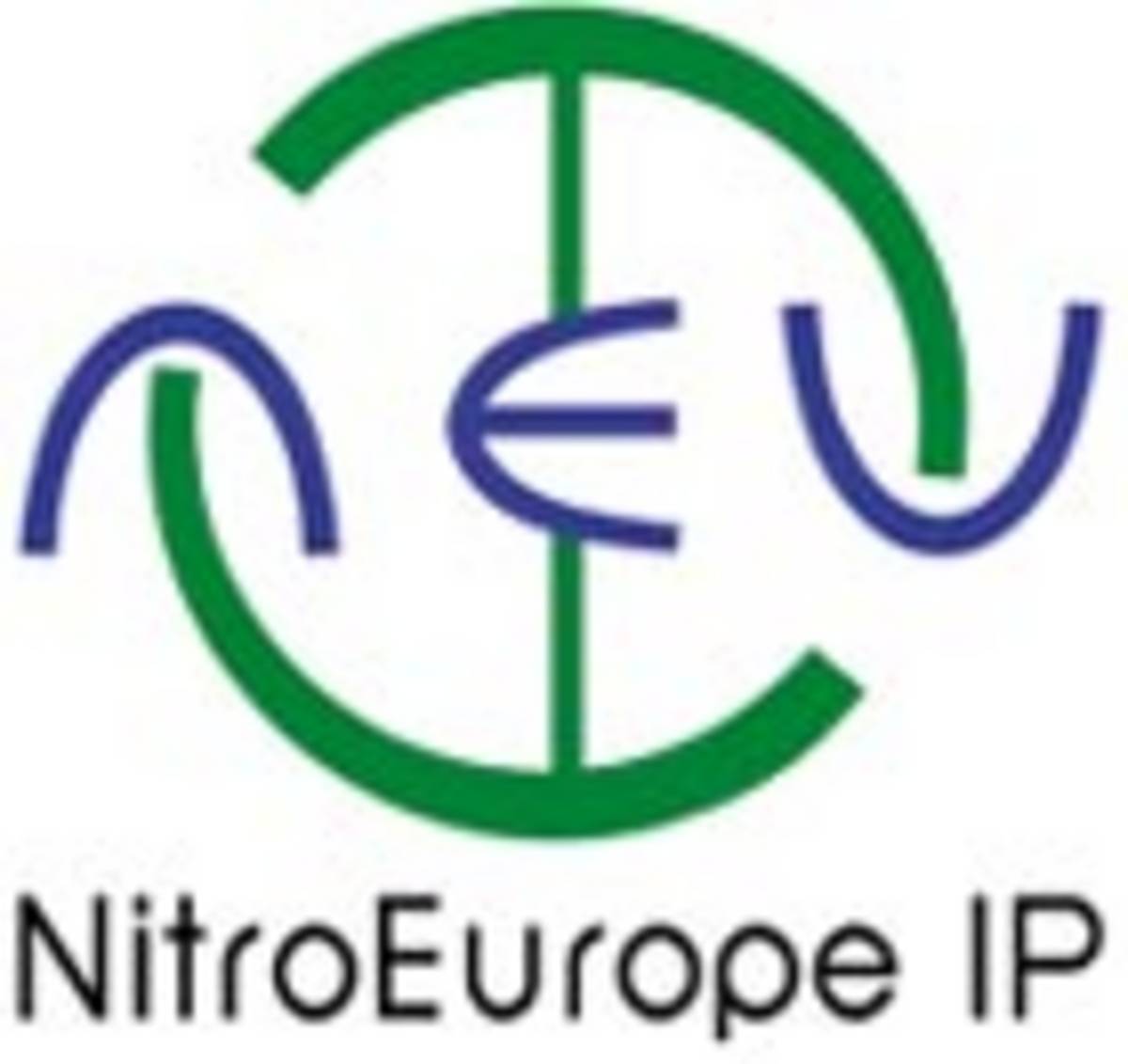
NitroEurope - or NEU for short - is a project for integrated European research into the nitrogen cycle. NitroEurope is part of the EU's Sixth Framework Programme for Research and Technological Development, and run for 5 years from February 2006 until 2011.
Overview
The project addressed the major question: What is the effect of reactive nitrogen (Nr) supply on net greenhouse gas budgets for Europe? The objectives are to:
- establish robust datasets of N fluxes and net greenhouse-gas exchange (NGE) in relation to C-N cycling of representative European ecosystems, as a basis to investigate interactions and assess long-term change,
- quantify the effects of past and present global changes (climate, atmospheric composition, land-use/land-management) on CN cycling and NGE,
- simulate the observed fluxes of N and NGE, their interactions and responses to global change/land-management decisions, through refinement of plot-scale models,
- quantify multiple N and C fluxes for contrasting European landscapes, including interactions between farm-scale management, atmospheric and water dispersion, and consideration of the implications for net fluxes and strategies,
- scale up Nr and NGE fluxes for terrestrial ecosystems to regional and European levels, considering spatial variability and allowing assessment of past, present and future changes,
- assess uncertainties in the European model results and use these together with independent measurement/inverse modelling approaches for verification of European N2O and CH4 inventories and refinement of IPCC approaches.
These objectives were met by a programme that integrated:
- an observing system for N fluxes and pools [Component 1]
- a network of manipulation experiments [Component 2]
- plot-scale C-N modelling [Component 3]
- landscape analysis [Component 4]
- European up-scaling [Component 5] and
- uncertainty and verification of European estimates [Component 6].
In addition, the project organisation included cross-cutting activities addressing management, databases, training and dissemination.
NEU advanced the fundamental understanding of C-N interactions at different scales and deliver: process-based models, landscape-level assessments, European maps of C-N pools, Nr fluxes and NGE, and independent verification of GHG inventories, as required under the Kyoto Protocol.
Partnership
The NitroEurope IP built on a strong partnership between 62 core institutions across Europe, Russia, China and Africa. In addition to that, NitroEurope reached out to collaborate with key partners in a wider scientific community. These "International Associate Partners" (IAPs) form a close relationship with one of the NitroEurope core partner institutions and engage in collaborative research and exchange methods and data.
PEER involvement as core partners include NERC-CEH (Project Coordinator), JRC, Alterra, SYKE and DCE.
Results
Over the last 5 years, NitroEurope has been addressing the ways in which human alteration of the nitrogen cycle is acting as driver of Europe's greenhouse gas balance. It has used a combination of flux measurements, experimental manipulation, landscape analysis and modelling at local to European scales to develop this picture.
In addition, NitroEurope has spearheaded the effort of the European Nitrogen Assessment (ENA), which was launched that the Nitrogen and Global Change Conference in Edinburgh in April 2011.
The combined effort has demonstrated that nitrogen emissions to the environment have both warming effects, through nitrous oxide and ozone production, and cooling effects due to increasing the growth of Europe's forests and by forming particulate matter in the atmosphere which scatters light. Overall, the ENA has reported that these effects largely balance. However, there is no cause for complacency, as the ENA shows an estimated damage cost of nitrogen pollution in Europe of 70 to 320 billion euro per year, with most of it caused by effects of air pollution on human health and ecosystems. Because of these other effects, it is not possible to count on any cooling effects of nitrogen on climate. In order to get all round benefit, the challenge must be for Europe to improve its nitrogen use efficiency, maximizing the fertilizer benefits for food, while reducing the losses of all N pollution forms simultaneously.
This poses major challenges for the future, both to implement N efficient policies, and for society to avoid overconsumption of nitrogen. The work showed that 85% of harvested N in Europe feeds livestock rather than people, while people eat on average 70% more protein than is needed. Our every day choices on how much meat and dairy we eat, can therefore make a huge difference in reducing nitrogen pollution.
Links
European Nitrogen Assessment, Cambridge University Press
Watch ENA video on YouTube